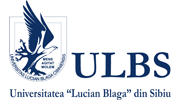Beta hexachlorocyclohexane (Beta HCH)
Traded as: N/A
What is it? Unintentional by-product, one of the five stable isomers (stable forms) of hexachlorocyclohexane (HCH) produced in the manufacturing of the enriched HCH (lindane, as it is known).
Use (purpose) : Beta-HCH is a by-product in the lindane production. No final applications.
Generally, HCH and its forms are among the best studied pesticides from the point of view of health and environmental effects, its behaviour in the environment being relatively well known (Breivik et al., 1999).
Present status: Since 2009 the Stockholm Convention classifies the beta-HCH as POP, its production being conditioned by specific exceptions for acceptable purposes. During the sixth meeting of the Conference of Parties to the Stockholm Convention (COP-6), organized in Geneva in 28 April – 10 May, 2013, the Annexes A, B and C of the Convention were amended, with certain specific exemptions and acceptable purposes, in order to include 11 new substances identified as having POP features, among which Alphahexachlorocyclohexane and Betahexachlorocyclohexane. However, these two substances do not represent the subject of any exemption, as they are banned in terms of production as well as usage in all signing countries.
In Romania: -.
Health effects: same as for alpha-HCH
Exposure limit, lethal dose: see alpha-HCH
Contamination sources:
- Occupational: the exposed population are workers in the HCH-based pesticide production.
- Food: Geyer et al. (1986) consider that in the industrialised countries more than 90% of the HCH-derivatives exposure is done through contaminated food.
Useful links: beta-hexachlorocyclohexane (in English)








